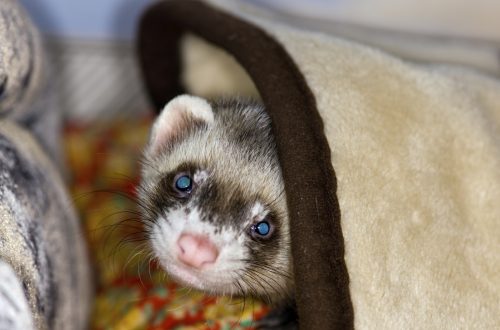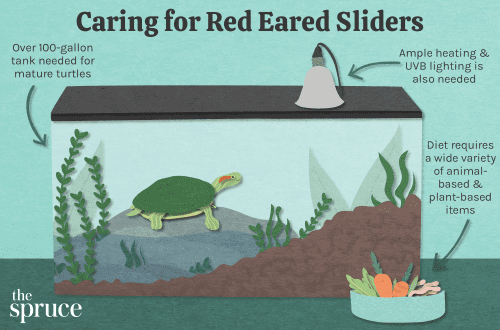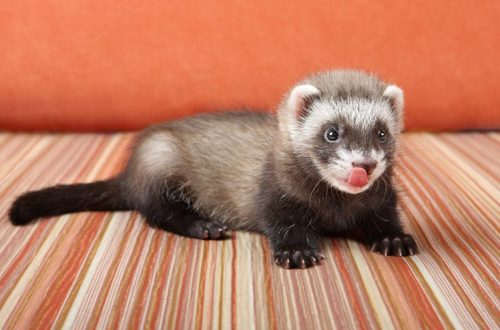
How to feed a land tortoise at home, how does she drink?
Under natural conditions, turtles take care of themselves by choosing the right food. If necessary, they eat protein foods, as well as minerals that are necessary for the formation of the shell. If the turtle becomes a pet, then it falls entirely on the maintenance of people, and the owner is engaged in its nutrition.
Contents
Three groups of turtles
According to the type of food, turtles are divided into three groups: carnivores, omnivores and herbivores. Each of them corresponds to a certain ratio of animal and vegetable food. Feeding inappropriate food for each group of turtles is fraught with diseases of the internal organs, digestive complications, and metabolic problems. It is also necessary to include calcium and vitamins in the diet weekly. What kind of food should be given to each group?
Predatory
The food of predatory turtles should consist of 80% animal food and 20% vegetable food. This group includes almost all aquatic species and all young aquatic species, such as young red-eared, caiman, trionyx, marsh, musky, etc.
Their main food is:
- lean fish, live or thawed, with entrails and small bones. For young turtles, the fish should be finely chopped (backbone, excluding ribs) with bones, for adults – whole or in large pieces. Large bones can be crushed or finely chopped.
- beef or chicken liver is given once a week;
- seafood such as green (not pink) shrimp, sea cocktail;
- mammals (small): naked mice, rat pups, runners.
All seafood, as well as turtle fish, can only be eaten raw, do not give thermally processed food;
Complementary feed, to be given once a week, serves:
- Dry food for freshwater turtles, e.g. in the form of sticks, tablets, flakes, granules, capsules, Tetra, Sulfur, etc.
- Insects: moth, fodder cockroaches, grasshoppers, bloodworms, crickets, earthworms, gammarus and so on;
- Mollusks, amphibians, invertebrates: slugs, frogs, small shelled snails, tadpoles and similar marsh.
It is forbidden to give predatory turtles:
- meat (beef, chicken, pork, lamb, sausages, sausage, any kind of minced meat, etc.), as well as fatty fish, milk, cheese, bread, fruit, dog or cat food, etc.
Omnivorous turtles
The diet of this group of turtles should consist of from 50 percent animal food and 50 – vegetable. Omnivorous turtles include semi-aquatic and adult aquatic, some types of land turtles: prickly, kuor, adult red-eared, Spengler, red-footed (coal), etc.
Their menu consists of half animal food, see the list above, and half plant food, the list is below. Aquatic turtles are spoiled with fish and seafood (as animal food), and mice are given to land animals.
- Plant food for aquatic species are plants that grow in water conditions,
- Land plants are given plants that live on earth, fruits and vegetables are added to them.
Herbivores
The menu of this group of turtles is based on plant food, which makes up 95% of the total diet, animal food consists of 5%.
Herbivores include: all land turtles, including radiant, flat, Central Asian, Greek, spider and others.
The main food of this group is:
- greens, it makes up 80% of the entire menu (semi-dry or fresh salads, edible leaves, flowers, succulents, herbs.
- vegetables – 15% of the diet (pumpkin, cucumbers, zucchini, carrots …)
- fruits that are not very sweet (apples, pears, etc.) are 5% on the menu.
Complementary feed laid once a week, it includes:
- non-poisonous mushrooms, such as russula, boletus, champignons, etc.
- dry balanced food for land turtles of the trade marks “Sera”, “Tetra”, “Zumed”.
- other: soybean meal, dry yeast, raw young sunflower seeds, bran, dry seaweed…
It is forbidden to give meat, this category includes: any minced meat, sausages, sausage, chicken, beef, pork, etc.). Also fish, milk, cheese, cat or dog food, bread…
Common Mistakes When Feeding Turtles
- Land herbivores are given animal food, predators are fed only plant food.
- They feed too infrequently or often, leading to obesity and malformation of the trunk and shell, or malnutrition and death.
- Vitamins and calcium are not added to food, which ends with the development of a crooked shell, beriberi, and also leads to fractures of the limbs.
- Bog turtles are fed only bloodworms, gammarus and other similar food, which is not the main food of turtles.
Now let us dwell in more detail on the nutrition at home of the land tortoise.
What to feed a land tortoise?
These animals are among the most unpretentious. Turtles eat little, do not require special care – they are not difficult to keep at home. All land turtles are herbivorous reptiles. As mentioned above, their diet is 95% plant foods and 5% animal. Feeding inappropriate food for this group, such as meat, is fraught with diseases.
What does the turtle love?
Turtles’ favorite food is lettuce and dandelion – you can even dry it for the winter. And also she is not indifferent to vegetables and fruits. The main food consists of almost all plants, vegetables, fruits, and berries that are not poisonous to turtles. Can be fed with field herbs and indoor plants such as: aloe, pea stems and leaves, tradescantia, alfalfa, timothy grass, lawn grass, plantain, goutweed, rhubarb, sprouted oats, barley, thistle, sorrel, coltsfoot.
The vegetable menu consists of peppers, beans, pumpkins, carrots, zucchini, radishes, beets, artichokes, this list will be supplemented by cucumber and horseradish, which should not be given in large quantities.
Allowed tortoises feed a variety of fruits and berries: apples, apricots, plums, peaches, mangoes, bananas, oranges, tangerines, watermelon, raspberries, strawberries, blueberries, strawberries, blackberries, blueberries. Additional foods are: mushrooms, dry commercial feed, dry sea cabbage, young sunflower seeds, soybean meal, bran.
Not to be given to turtles
It is undesirable to feed onions, garlic, spinach, spicy herbs, grasshoppers, crickets, domestic cockroaches, poisonous insects, cherries, eggshells (causes salmonellosis), feed one kind of vegetable or fruit.
Prohibited foods include:
- potato,
- medicinal products containing alkaloids,
- indoor (diffenbachia, euphorbia, azalea, elodea, ambulia, oleander, elodea.
- vitamin D2 and the drug gamavit (they are toxic to reptiles).
- milk, bread, citrus peel, bones from fruits and berries, pet food, “human” food, including cereals (with the exception of oatmeal, which is not boiled, but soaked in water or vegetable juice, it is supposed to be given no more than 1 time per month), meat, any cooked foods.
From malnutrition, the animal begins irreversible changes in the liver, which can greatly shorten its life.
Does the turtle drink?
Turtle “drinks” water through the skin. In order to water the animal, it must be bathed periodically, at least once a week. The optimum water temperature fluctuates around 32 degrees, pour it to the middle of the shell. If you just bought a reptile at a pet store, then most likely the turtle has been bathed for a long time and did it very rarely, so its body is probably dehydrated. Therefore, she needs to replenish the water balance, within a week after the purchase, arrange water procedures for her every day, give her the opportunity to splash!





